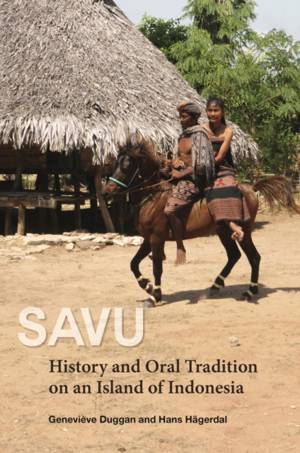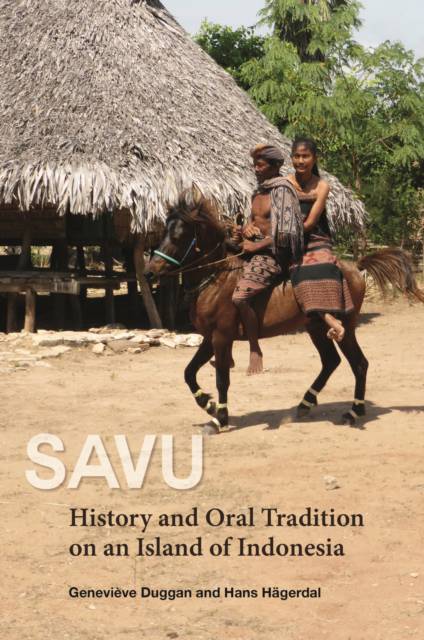
- Afhalen na 1 uur in een winkel met voorraad
- Gratis thuislevering in België vanaf € 30
- Ruim aanbod met 7 miljoen producten
- Afhalen na 1 uur in een winkel met voorraad
- Gratis thuislevering in België vanaf € 30
- Ruim aanbod met 7 miljoen producten
Zoeken
Savu
History and Oral Tradition on an Island of Indonesia
Geneviève Duggan, Hans Hägerdal
Hardcover | Engels
€ 61,45
+ 122 punten
Omschrijving
The book focuses on the historical trajectories of Savu, an island in the Nusa Tenggara Timur province, eastern Indonesia. While Savu is a relatively small island, aspects of its society, as well as this study's blend of anthropology and historical method, makes this book of fundamental relevance to the ongoing comparative examination of Austronesian-speaking populations from Madagascar to Hawaii and from Taiwan to Timor. This book brings together Duggan's detailed understanding of Savunese society and genealogies with Hägerdal's deep knowledge of the Dutch and Portuguese archives to understand the overlap between these perspectives on Savu's past. The text discusses the precolonial period up to the sixteenth century, and then examines how early-colonial encounters with the Portuguese and Dutch (VOC) changed the system of governance. In the nineteenth century, the Savunese embarked on minor colonial enterprises in Timor and Sumba, and were still largely autonomous vis-à-vis the colonial state. Protestant missionaries gained foothold after 1870, though Christianization was a slow process. Colonial rule via a Dutch-appointed raja was introduced in the early twentieth century. The text follows the fate of Savu during the struggle for independence and the postcolonial era, discussing the dilemmas of modernization and the resilience of the unique local culture.
Specificaties
Betrokkenen
- Auteur(s):
- Uitgeverij:
Inhoud
- Aantal bladzijden:
- 720
- Taal:
- Engels
Eigenschappen
- Productcode (EAN):
- 9789814722759
- Verschijningsdatum:
- 15/01/2019
- Uitvoering:
- Hardcover
- Formaat:
- Genaaid
- Afmetingen:
- 152 mm x 231 mm
- Gewicht:
- 1079 g

Alleen bij Standaard Boekhandel
+ 122 punten op je klantenkaart van Standaard Boekhandel
Beoordelingen
We publiceren alleen reviews die voldoen aan de voorwaarden voor reviews. Bekijk onze voorwaarden voor reviews.











